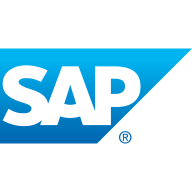

SAP PowerDesigner and IDERA ER/Studio are key competitors in the data modeling and architecture sector. SAP PowerDesigner often edges out for its nuanced integration with SAP systems, while IDERA ER/Studio is favored for its user-friendly collaboration features, beneficial for teams focusing on data governance.
Features: SAP PowerDesigner is well-regarded for its data integration abilities, enterprise architecture support, and robust metadata management. It's particularly suited for large SAP environments. Meanwhile, IDERA ER/Studio shines with its collaboration tools, model-driven design capabilities, and features that enhance data governance and database optimization, fitting diverse environments.
Room for Improvement: SAP PowerDesigner could improve its ease of use for new users and simplify the integration process with non-SAP systems. The solution might also benefit from enhancing its collaboration features and reducing deployment times. On the other hand, IDERA ER/Studio could expand its integration options for specific niche databases, improve the depth of its metadata management, and augment its graphical interface to support even more complex modeling scenarios.
Ease of Deployment and Customer Service: Deployment of IDERA ER/Studio tends to be more straightforward and is faster, with effective support across various data platforms. In contrast, SAP PowerDesigner offers comprehensive support, primarily beneficial for SAP-centric environments, but its deployment can be lengthy due to intricate configurations associated with vast SAP systems.
Pricing and ROI: SAP PowerDesigner generally requires a higher initial investment, justifying its cost through advanced SAP integrations and capabilities. Its ROI is optimal when used within SAP ecosystems. On the flip side, IDERA ER/Studio is more cost-effective with quicker ROI, attributed to efficient deployment and maintenance, appealing significantly to budget-conscious organizations.
I cannot put a number on it, but if you think about developing software manually or using a tool to generate software and considering the license cost of SAP PowerDesigner, the ROI is pretty positive relatively quick because it's not that expensive.
There is plenty of documentation available online for assistance, making it straightforward to address any issues.
It relies heavily on VBScript, which is something that will be end of life in a few years in Windows.
Regarding technical support, after a recent licensing issue caused a temporary halt, we realized the importance of tracking licensing and version updates to avoid future disruptions in service.
Until I get 16.7 and complete the migration, I'm not getting any help from them.
It scales well to teams of one hundred plus people.
Currently, there are no scalability limitations in SAP PowerDesigner, allowing us to create numerous data models for various projects.
The scalability of SAP PowerDesigner is very good.
Our main objective is to upgrade to the supported version and be able to do whatever we are doing at the moment.
Erwin is a very stable product.
If you use a lot of customizations, especially using VBScript, it becomes less stable.
This may lead to frequent downtimes requiring server maintenance; thus, it is not suitable for highly complex solutions, but moderate complexities can be handled.
The product is reliable.
Both Erwin and ER/Studio do not have AI or machine learning features for automation.
SAP PowerDesigner does not have a cloud option. It's only on-premise.
I would like to see a feature added to SAP PowerDesigner where, upon extracting data from a source, it automatically identifies relationships between tables.
The web portal is unstable and does not work. It freezes up all the time.
The setup cost may have been around $1500 to $2000.
In terms of pricing, ER/Studio is slightly more expensive compared to Erwin, by about five to ten percent.
One issue is the cost, as it is a high-priced tool coming from SAP.
When we built an application, it facilitated the development process by providing the skeleton of the application and the foundation for functions.
It has strong versioning support and can even integrate with third-party versioning tools like GitHub.
The best features of SAP PowerDesigner, from my perspective, are its ability to keep the connectivity between the source database and the new system, data redundancy and availability, and impact analysis.
SAP PowerDesigner doesn't only allow you to model the structure of your database, but you can also model data mappings or data flows or lineage.
What I appreciate best about SAP PowerDesigner is that it is a very detailed and comprehensive tool.
| Product | Market Share (%) |
|---|---|
| SAP PowerDesigner | 7.3% |
| IDERA ER/Studio | 3.6% |
| Other | 89.1% |

| Company Size | Count |
|---|---|
| Small Business | 4 |
| Midsize Enterprise | 11 |
| Large Enterprise | 25 |
| Company Size | Count |
|---|---|
| Small Business | 18 |
| Midsize Enterprise | 6 |
| Large Enterprise | 18 |
IDERA ER/Studio is a powerful suite for business-driven data modeling that enables companies to create an enterprise architecture foundation for data governance. With round-trip support for multiple database platforms, data architects have the power to reverse-engineer, analyze, and optimize existing databases easily from diverse platforms. Data professionals can easily capture and share models, metadata, data sources, and glossaries across the organization for improved alignment between the organization and Information Technology. Organizational stakeholders can take part in the metadata definition workflow and access information on models and metadata at the right level for their needs.
Unlike its competition, it provides the broadest range of data platform support, industry-leading enterprise-level capabilities, visual data lineage and flow modeling, full dimensional modeling for data warehousing and business intelligence, and business data objects to bridge the gap between developers and data architects. It also provides a complete solution for enterprise architecture and data governance, extensive model change management, unique incorporation of true enterprise data dictionaries, unique linking of constructs across models, integrated visual data lineage import, and integrated data and business process modeling.
SAP PowerDesigner is a valuable solution for developing several different types of data models according to business process needs. Data models can be logical, conceptual, and physical, and can also include dimensional and relational models. PowerDesiger has the ability to integrate a designed business process model with the actual database design to ensure that all the data process steps are included in the logical model. PowerDesigner is able to use the physical model to create the actual database, and from there, design various physical iterations from a single logical model.
PowerDesigner can perform excellent reverse-engineering of existing databases to create a model diagram. The solution integrates well with many of today's most recognized database management systems (DBMS). Some of the solution’s featured outputs include custom or standard reports of every object in the design (relationships, field, and tables), design impact analysis, and entity-relationship (ER) designs.
PowerDesigner offers intuitive capabilities such as metadata management, link and sync, and data modeling. Users can instantly view architecture layers and essentials, access the robust metadata repository, and share findings with the user’s entire team.
SAP PowerDesigner Features
SAP PowerDesigner Benefits
Reviews from Real Users
“The most valuable feature of SAP PowerDesigner is the testing of the models, it has the best function. Reverse engineering is very helpful too. I use SAP PowerDesigner for data modeling and documentation. It interacts well with the other tools. Additionally, we use it for all of the business requirements, such as CDM and PDM.” - Saadat T., Emerging Cloud Solution Architect at a tech services company
“It's a great tool for documentation. A new data scientist can easily understand the data just by looking at it. Once you are managing your physical data with a logical data model, by looking at this data model, you can understand what it means, the business meaning of the elements which are maintained by the relational database.” - Michael R., DA
We monitor all Enterprise Architecture Management reviews to prevent fraudulent reviews and keep review quality high. We do not post reviews by company employees or direct competitors. We validate each review for authenticity via cross-reference with LinkedIn, and personal follow-up with the reviewer when necessary.